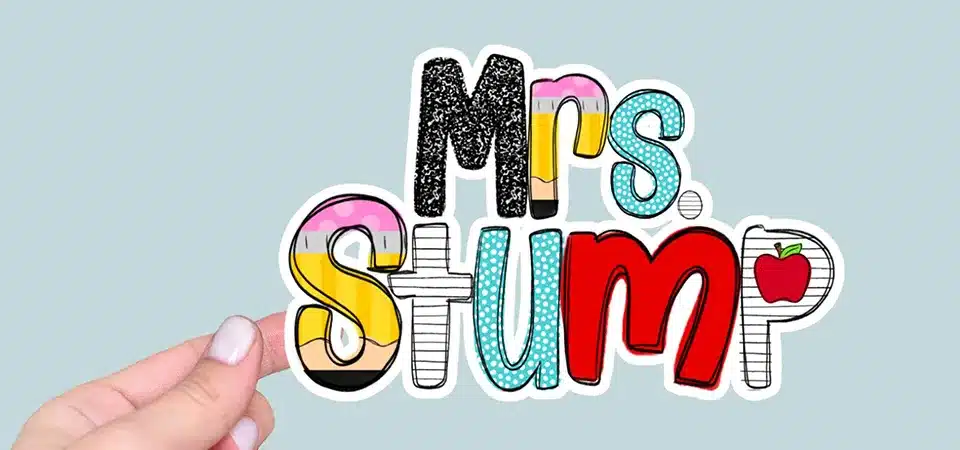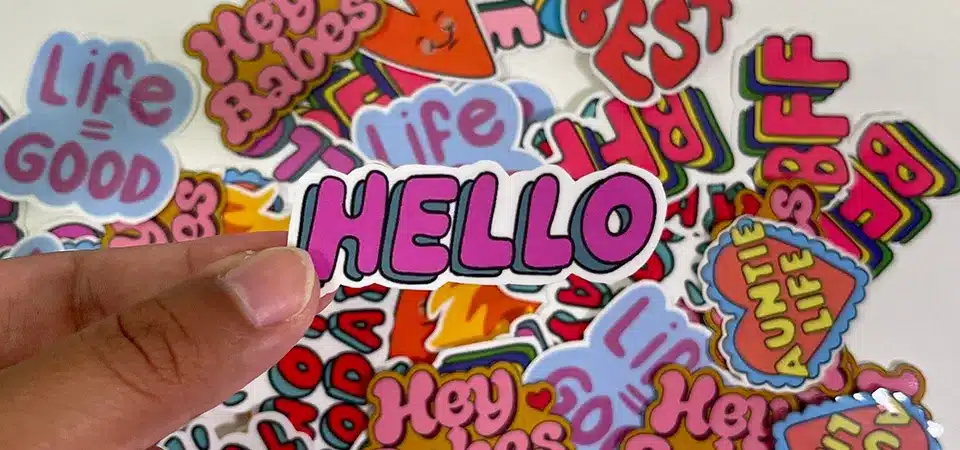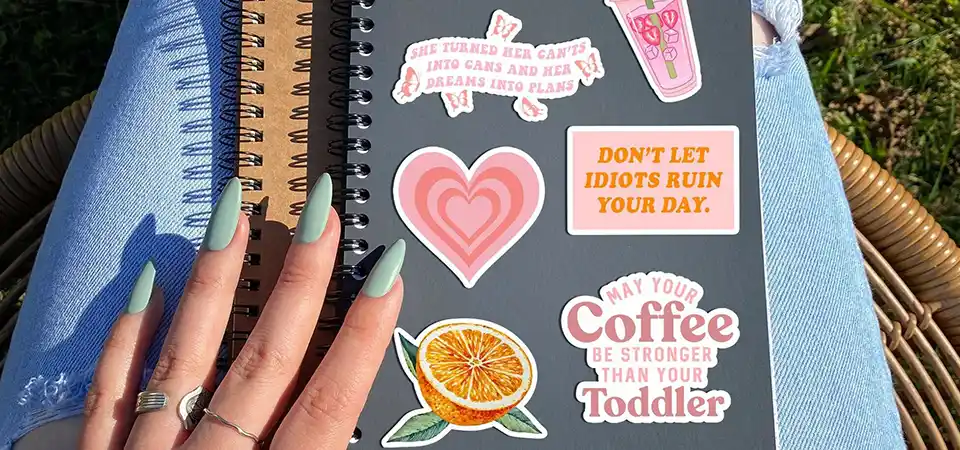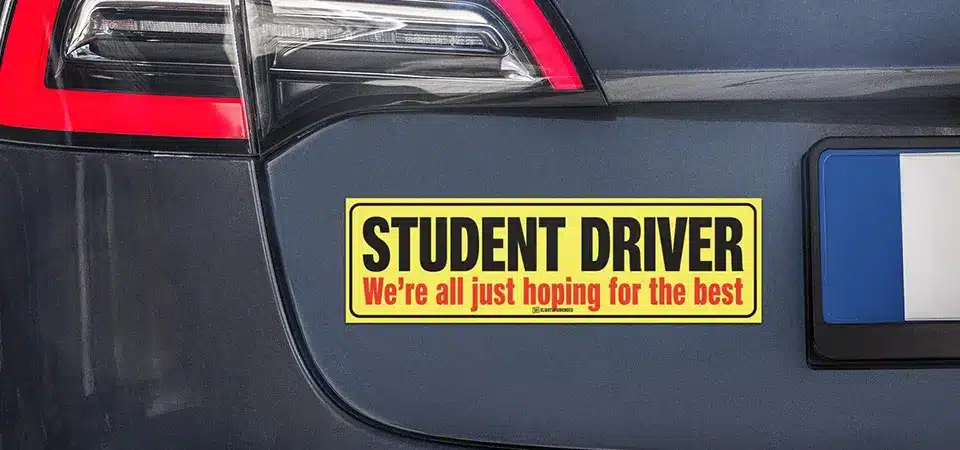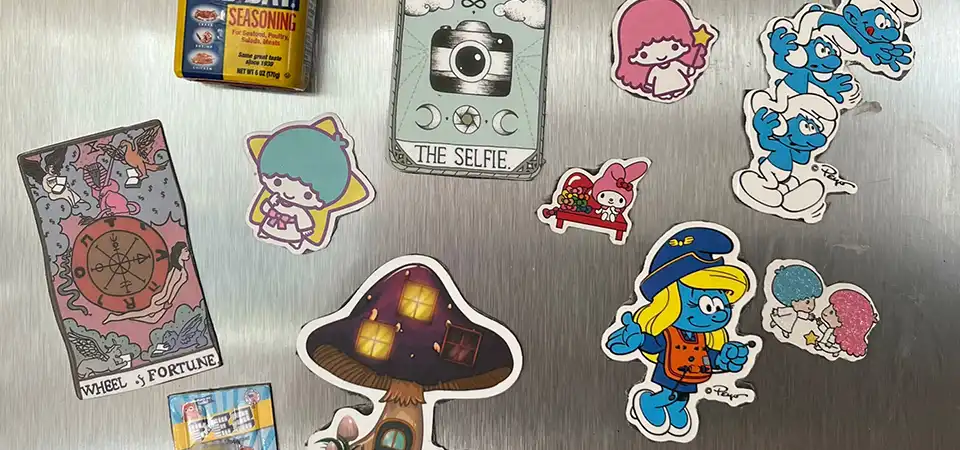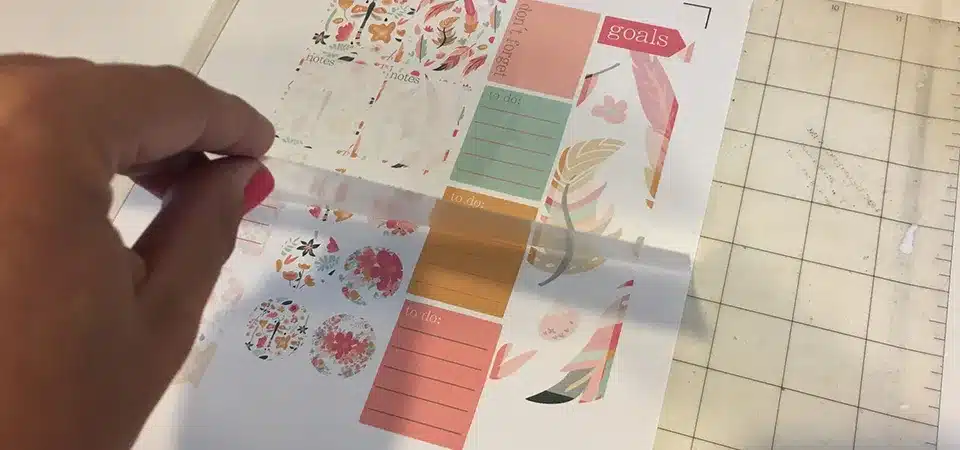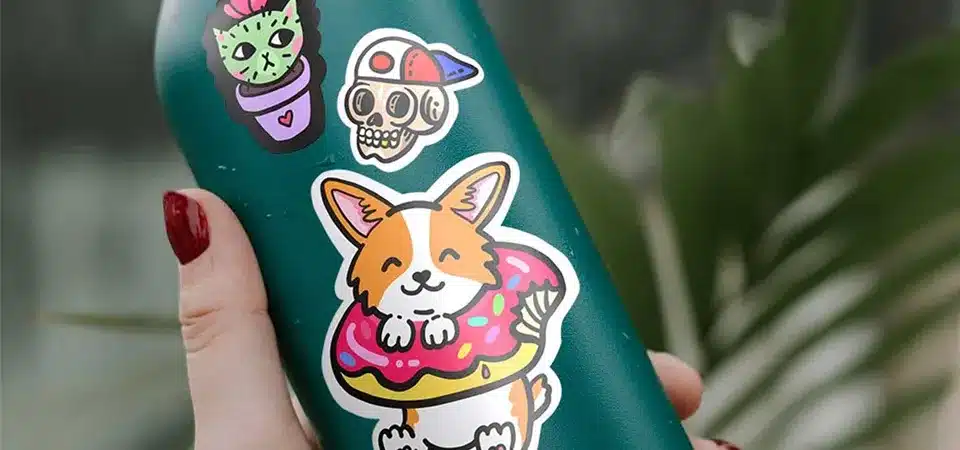You're ready to order stickers, but the option for lamination pops up. Is it a necessary upgrade or just an extra cost you don't really need?
Laminated stickers are superior for durability, weather resistance, and appearance, making them ideal for long-term outdoor use. Non-laminated stickers are a more economical choice, perfect for indoor, short-term, or disposable applications where toughness isn't needed. The best choice depends entirely on your sticker's purpose.
As a sticker manufacturer, this is one of the most common questions I get from my clients. The truth is, one isn't always "better" than the other. The real secret is matching the sticker's construction to its job. Think of it like this: you wouldn't wear sandals to go hiking in the snow. Lamination is about making sure your sticker is dressed for the occasion. Let's break down exactly what it is, so you can decide if it's the right choice for your project.
What exactly is sticker lamination and why does it matter?
You see the word "lamination" but you're not sure what it means. You're worried you might pay for a feature you don't even need.
Sticker lamination is the process of adding a thin, clear protective film over the printed surface of a sticker. It matters because this layer acts as a shield, protecting the ink from scratches, moisture, and fading caused by sunlight.
In my print shop, lamination is a key step for creating high-quality, long-lasting stickers. It's an extra layer we apply after the design is printed but before the sticker is cut into its final shape. This isn't just about making it feel thicker; this film fundamentally changes the sticker's performance and appearance. It's the difference between a sticker that looks great for a few weeks indoors and one that can survive on a car bumper for years.
Definition
At its core, sticker lamination is a transparent plastic film bonded to the top of your printed sticker. This film acts as a barrier between the printed ink and the outside world. It protects against physical damage like scratches and scuffs, and it also contains UV inhibitors that shield the colors from the sun's harsh rays, which prevents them from fading over time. It also makes the sticker completely waterproof, so it can handle rain, spills, or being washed without the ink running or smudging.
Types of Lamination
The laminate doesn't just protect; it also adds a specific finish to your sticker. The three main types we offer each create a very different look and feel.
- Gloss: This is the most popular choice. It creates a shiny, reflective surface that makes colors look more vibrant and deep. It's very eye-catching and gives stickers a premium, high-quality look.
- Matte: This finish has a non-reflective, satin-like surface. It provides a more subtle, modern, and sophisticated look. It's great for elegant branding because there's no glare, making the design easy to read from any angle.
- Soft Touch: This is a premium matte finish that feels incredibly smooth and velvety to the touch. It’s a unique texture that makes people want to touch it. It offers the same no-glare benefits of matte but with an added tactile experience.
What are the real pros and cons of laminated stickers?
Laminated stickers sound great, but you know there must be a catch. You're trying to figure out if the benefits are really worth the drawbacks for your budget.
The main pros of laminated stickers are superior durability, enhanced appearance, and easier application. The biggest cons are that they cost more to produce and can add a little bit of time to your order's turnaround.
When clients are weighing their options, I always try to be very direct about the trade-offs. Lamination is a fantastic feature, but it’s not always the right call for every single project. Understanding both the good and the bad is the only way to make a smart business decision. Let's look at the pros and cons I see every day from my perspective as a manufacturer.
Pros of the laminate stickers
- Durability: This is the number one reason to choose lamination. Your sticker becomes scratch-resistant, waterproof, and UV-proof. I once had a client who put our laminated stickers on his construction equipment. A year later, they were dirty and scuffed, but the colors were still bright and the sticker was fully intact. A non-laminated sticker would have been destroyed in weeks.
- Aesthetic enhancement: The finish of the laminate (whether gloss, matte, or soft-touch) can dramatically improve the look of your sticker. Gloss makes colors pop, while matte gives a sophisticated, glare-free finish. It elevates your design from a simple sticker to a professional-grade product.
- Easier application: Lamination adds thickness and rigidity to a sticker. This extra stiffness makes it much easier to apply, especially for larger designs. It's less likely to flop over, stick to itself, or trap air bubbles during application, giving you a smoother, cleaner result.
Cons of the laminated sticker:
- Cost more: There's no way around it; lamination adds to the price. It requires an extra material (the laminate film) and an additional step in the production process where we run the printed vinyl through a laminating machine. This added material and labor translate to a higher cost per sticker.
- Increase lead time: That extra step also adds time to production. It might only be one business day, but for customers on a very tight deadline, it's a factor to consider. We have to print, let the ink cure, laminate, and then cut. Skipping the lamination step makes the process faster.
So, do you actually need your stickers laminated?
Now you know what lamination is, but how do you know if you really need it? You don't want to waste money on protection you don't need.
You need lamination if your stickers will be exposed to sunlight, moisture, or frequent handling. For disposable packaging, indoor promotions, or short-term use, lamination is often an unnecessary expense, and non-laminated stickers are the smarter choice.
This is the final and most important question. The answer comes down to one thing: purpose. Where will your sticker live, and how long do you need it to last? I always ask my clients these two questions before we even talk about price. Your answer will point you directly to the right choice.
When lamination is unnecessary
If you're making stickers for things that won't see much abuse, lamination is overkill. For example, stickers for shipping boxes, product labels on items that are kept indoors, or handouts for a one-day event do not need that extra layer of protection. They are meant to be temporary or are used in a safe, controlled environment. In these cases, a non-laminated sticker is the perfect solution. It looks great, does its job, and saves you money. Choosing non-laminated here is not a compromise; it's the more efficient and economical choice.
How to laminate stickers?
This is a question I get sometimes, and it's important to clarify. Professional sticker lamination is an industrial process done here at my production facility. We use large, high-pressure cold-press laminating machines to bond the film to the vinyl before cutting. This ensures a perfectly smooth, bubble-free finish that lasts. While there are some DIY "self-laminating" sheets you can buy at office supply stores, they rarely give the same professional, durable result. For a truly high-quality, weather-resistant sticker, it's a process best left to a professional sticker printer like us.
Conclusion
The superior choice depends on your needs. Choose lamination for durability and a premium finish; choose non-laminated for indoor use and to save on costs. It's all about fitness for purpose.


